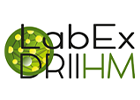Designing robust DNA barcode libraries for metabarcoding of freshwater plants by integrating herbarium collections and contemporary floristic inventories
Aquatic environmental DNA (eDNA) studies have considerably taken off during the last 10 years, promptly establishing eDNA as a new approach to monitoring the ecological status of European surface waters. On the one hand due to the numerous biological methods based on aquatic species, on the other hand due to the development of group-specific primers that allowed discrimination between species or at least genera. Understandably, rapid achievements were made for animal groups that include a small number of species (fish, amphibians) whereas it is still in development for plants, due to the complexity of obtaining a universal barcode applicable to eDNA for the latter. Nonetheless, research in plant eDNA barcoding and metabarcoding is making significant progress, mainly expanding in the detection of plant species in freshwater ecosystems. With a multi-barcode eDNA metabarcoding approach in mind, we are preparing a plant DNA barcode reference library for our study area, the Northern Vosges Regional Natural Park. Drawing from this experience and supported by current publications, we focus on the strong connection between metabarcoding of plant eDNA and floristic inventories, local barcode libraries, and herbaria. Prior knowledge of species distribution and abundant genetic data are the key to increasing species detection through eDNA (Cordier et al. 2020). We ought to standardise this practice before eDNA metabarcoding of plants can cover large river basins and span through time. Following the consensus on a combination of barcodes for the plant kingdom, the most recurrent ones in freshwater eDNA studies include the plastid DNA trnL, matK, rbcL regions and the nrDNA internal transcribed spacers (ITS) although it is likely that new barcodes emerge from further research. To date, the selection of primers seems to be of utmost importance since they offer different properties based on the research question. Seminal efforts have focused on the development of species-specific assays based on tailor-made primers. These have demonstrated the reliability of eDNA to be used for monitoring the distribution of aquatic plant species. Today, three of the most common aquatic invaders, Elodea canadensis, Elodea nutalli and Hydrilla verticillata have now their own assays aiming to identify the earliest invasions (Gantz et al. 2018). On the contrary, “universal” primers, such as those from White et al. (1990) within the ITS, prove to be useful in metabarcoding studies where many plant species from differing families are involved (Coghlan et al. 2020). Despite the fast-moving research in aquatic plant eDNA, DNA barcode reference libraries still lack many species, hindering the progress of applying eDNA surveys to large river basins through metabarcoding. Such studies still rely heavily on building local genetic libraries which is extremely time consuming and require important taxonomic knowledge of species, encumbered by the polyphyly of aquatic plant groups.




